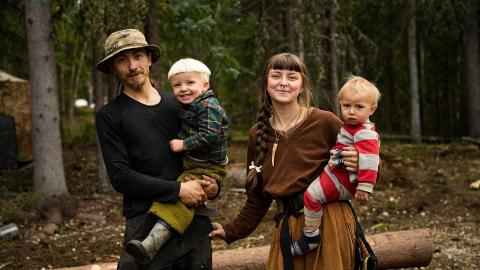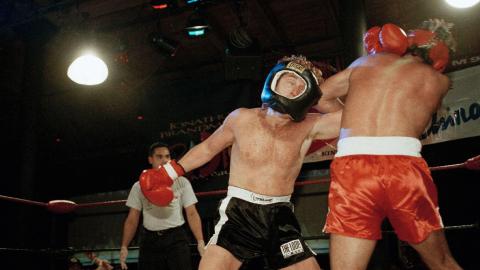Kennedy and Cuba
Kennedy inherits a military budget that's grown to take up nearly half of the entire government and he increases this by billions of dollars. He allows the American public to believe they're close to losing the arms race with Russia when America has enough atomic bombs to kill every man, woman and child on earth and 1,700 bombers to make it so. Russia, at this time, has less than two hundred. But Americans had realised by the end of the 1950s that nuclear testing meant radiation fall-out could soon be in their breakfast bowls. One of Kennedy's greatest achievements is the treaty agreed with Russia in 1963 that bans nuclear testing in the air. It's achieved after both countries come close to nuclear destruction over Cuba.
BAY OF PIGS
The CIA has a plan to invade the communist island of Cuba with Cuban exiles in order to topple the leader, Fidel Castro. Castro was the Bin Laden of his day and actions such as confiscating over a million acres of land from American companies hadn't endeared him to the US. But his reforms, including distributing the newly acquired land to the poor, make him a popular leader. In April 1961, less than three months into his Presidency, Kennedy authorises the coup. But Castro even knew of the invasion point, the Bay of Pigs. Within three days, the exiles are beaten. The Russian leader, Khrushchev, takes advantage of the American failure by preparing to install nuclear missiles.
THE CUBAN MISSILE CRISIS
On 16 October 1962, Kennedy's shown day old photographs of Soviet soldiers with nuclear warheads on Cuba. He turns for advice to ExComm, the Executive Committee of the National Security Council, one of whose members is the attorney general, his brother, Robert Kennedy. It's unknown whether Robert is aware that his presidential brother secretly records most of ExComm's meetings.
The first proposal, unanimously agreed, is to bomb Cuba without warning. This 'Pearl Harbor' option is dismissed by day three and it's decided to publicly denounce the missiles, and block any further missiles reaching Cuba. Russian defiance of this will be met with nuclear retaliation. On Monday 22 October Kennedy puts the world on nuclear alert. Americans stockpile food in preparation for the coming nuclear winter. Then, four days later, Khrushchev offers to remove the missiles. But only in return for a promise that America won't invade Cuba, and that nuclear missiles will be withdrawn from Turkey. Initially, Kennedy thinks this a fair swap. Others realise that to concede the safety of their European allies for the sake of American security would fatally undermine NATO. And the North Atlantic Treaty Organization was America's best defence against a Russian land invasion of Western Europe. But Khrushchev has already decided to back down, and as the Russians send their missiles home, the world breathes again. A year later, Kennedy is shot dead. Vice President Lyndon Johnson takes office and uses Kennedy's memory to push through the legislation that secures African Americans into the constitution. In August 1964, American officials fabricate an attack on a US vessel in the Gulf of Tonkin and use the Tonkin Resolution to officially launch the Vietnam war.
Did you know?
Three of the Bay of Pigs Cuban exiles used by President Kennedy returned to America only to find employment as burglars and wire-tappers for Richard Nixon in the Watergate scandal., On taking office, JFK launched the Alliance for Progress to help develop Latin America. But according to author Howard Zinn, instead of this bettering the lives of people in Latin America, it 'turned out to be mostly military aid to keep in power right-wing dictatorships and enable them to stave off revolutions'., In 1961 JFK told the world that America will put a man on the moon by the end of the decade. They just make it, in July 1969, when two men, Buzz Aldrin and Neil Armstrong become the first humans to walk upon the moon.
















